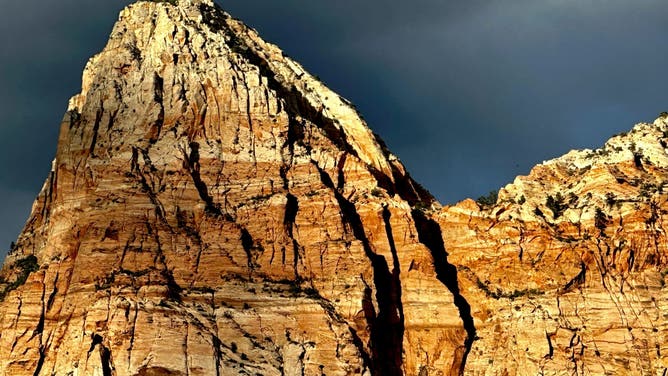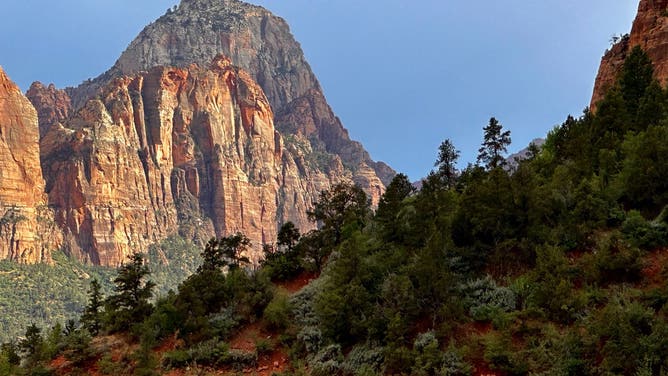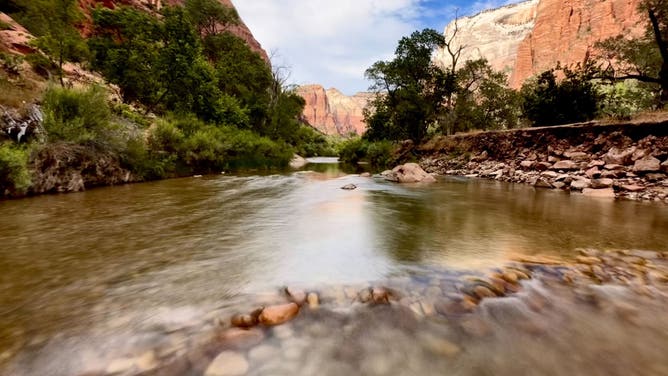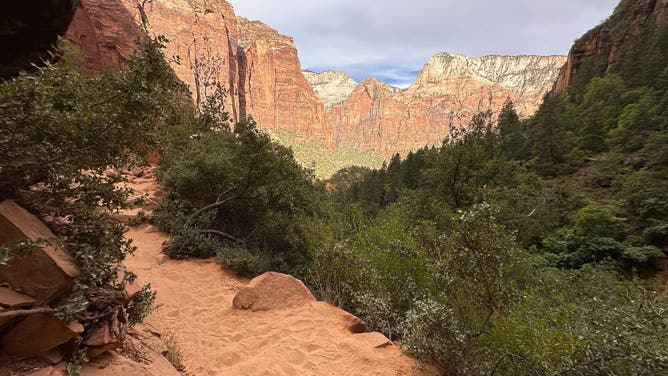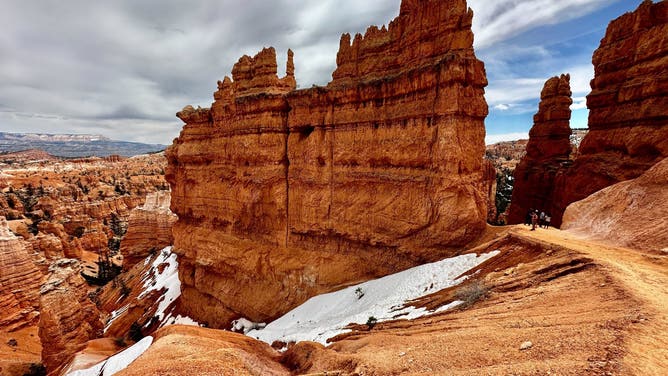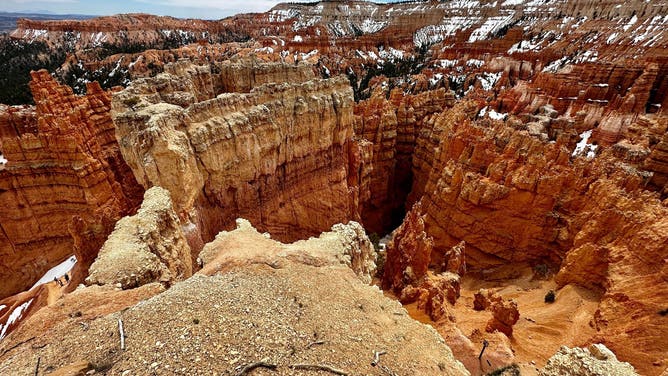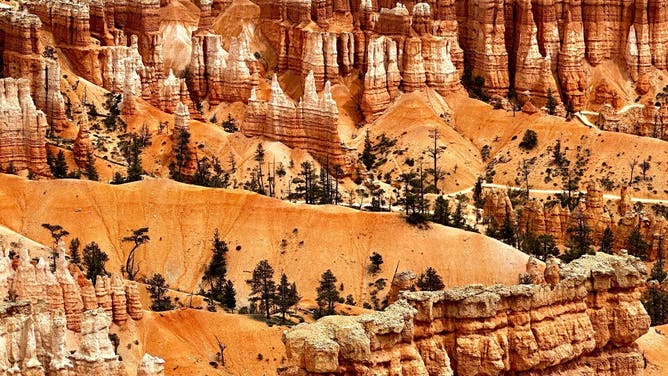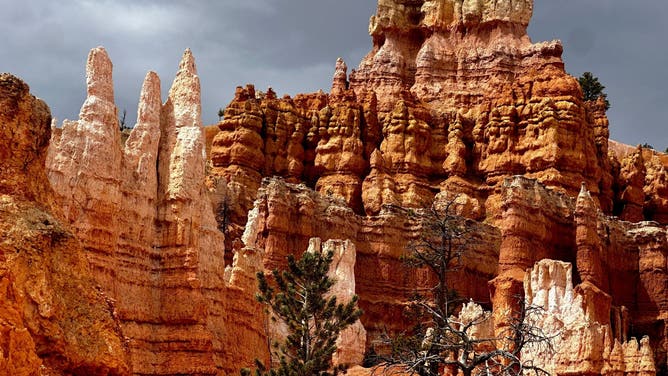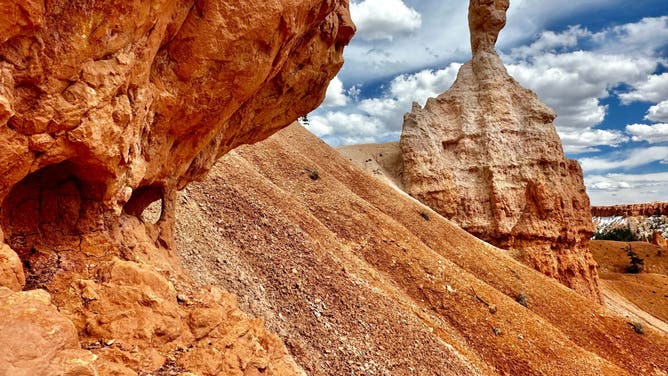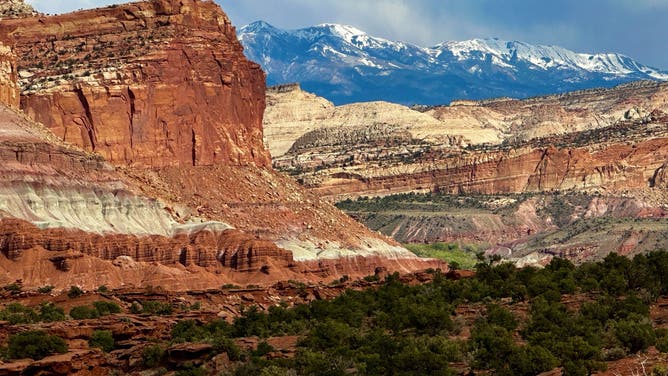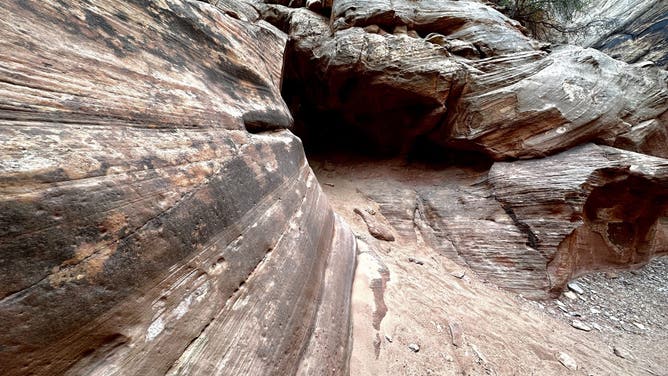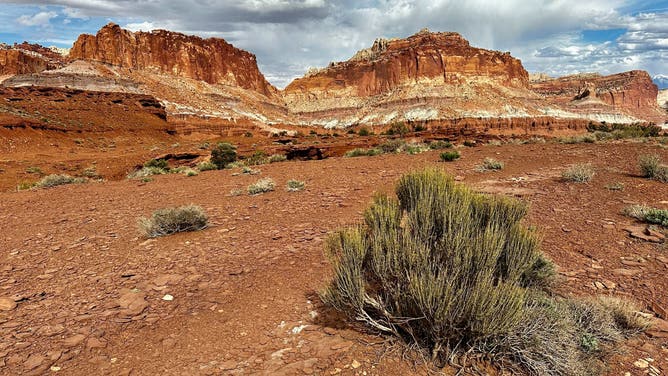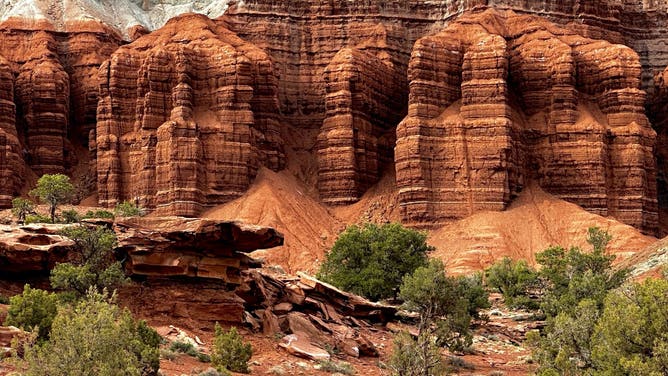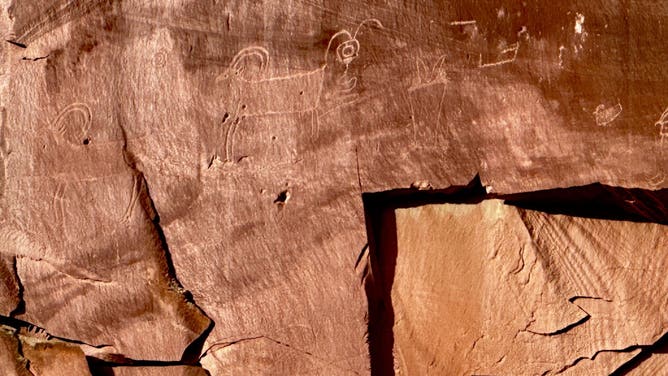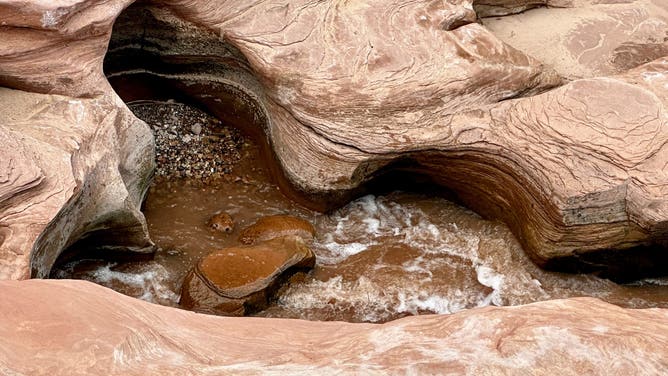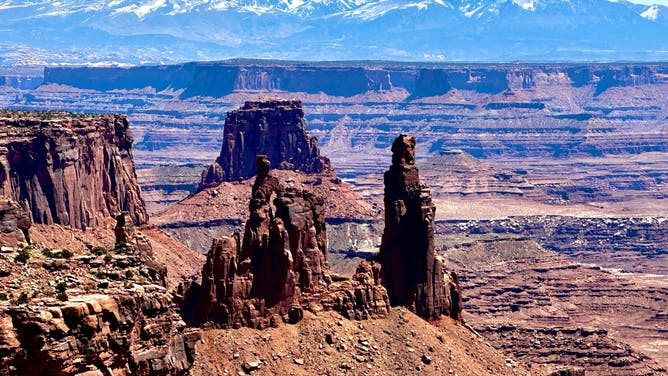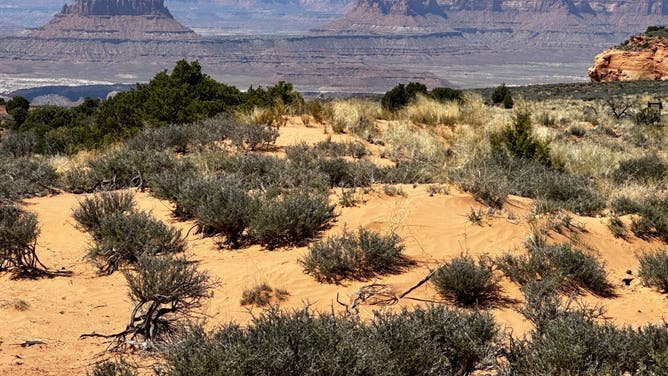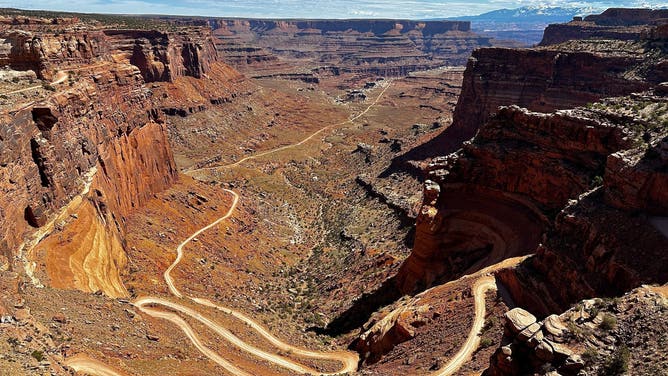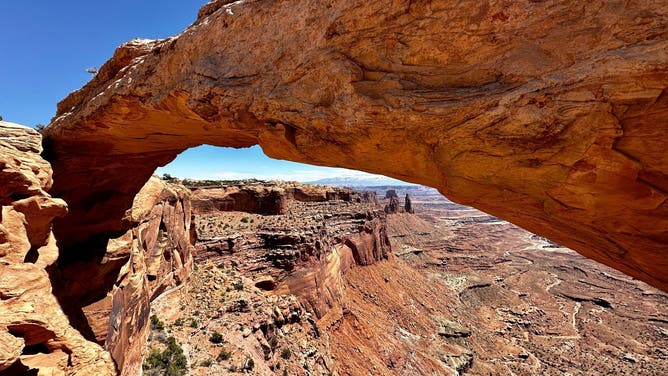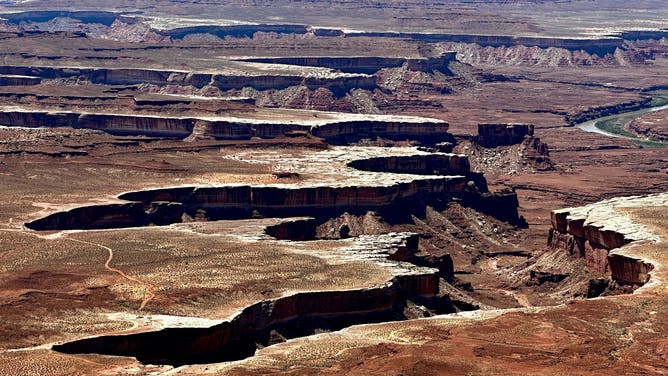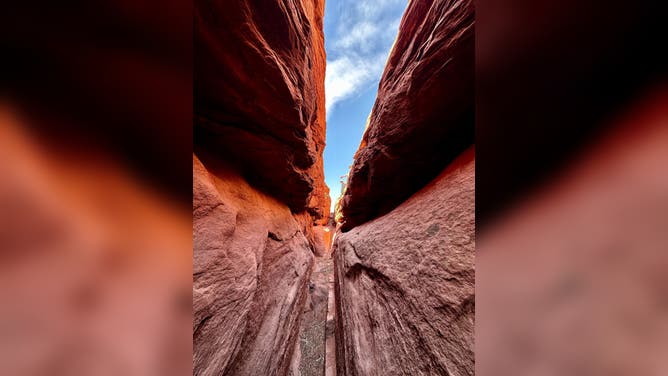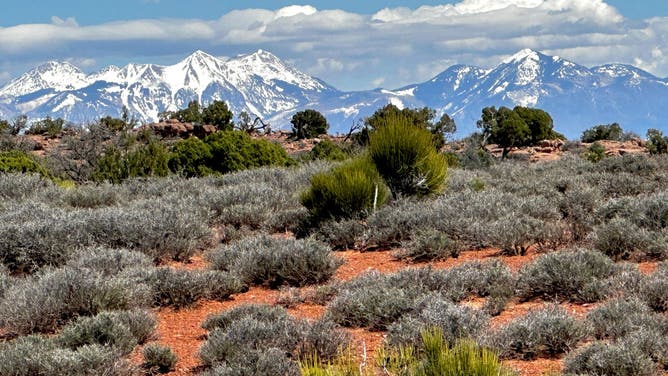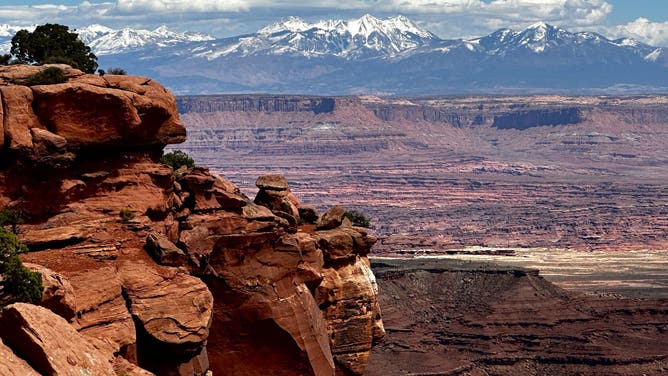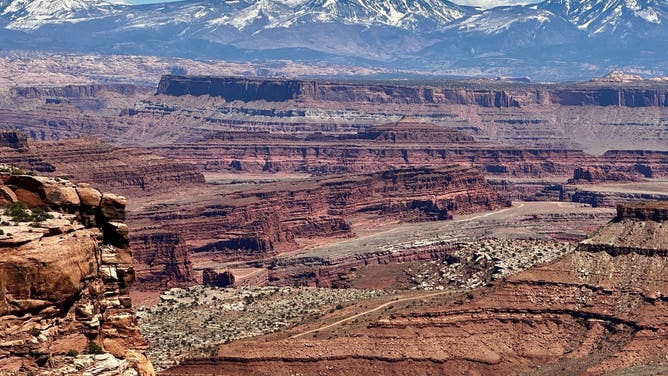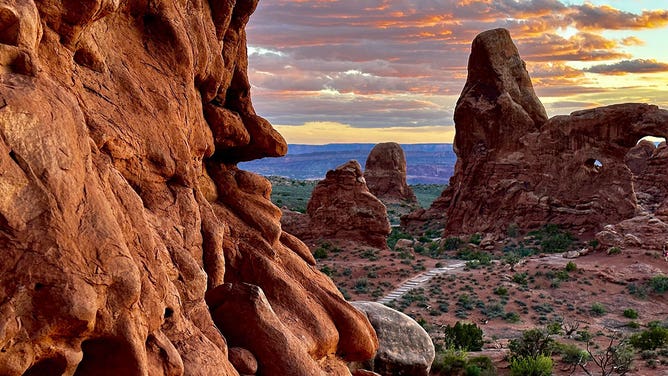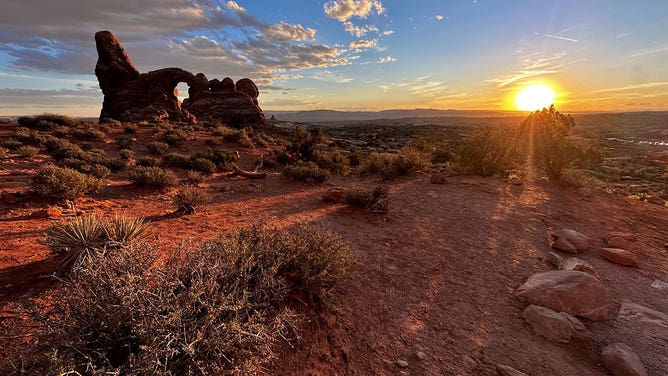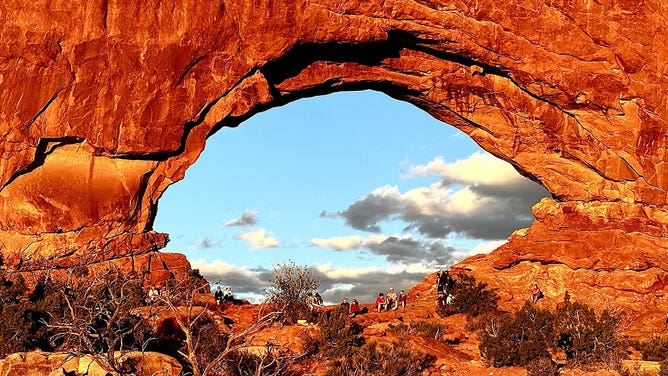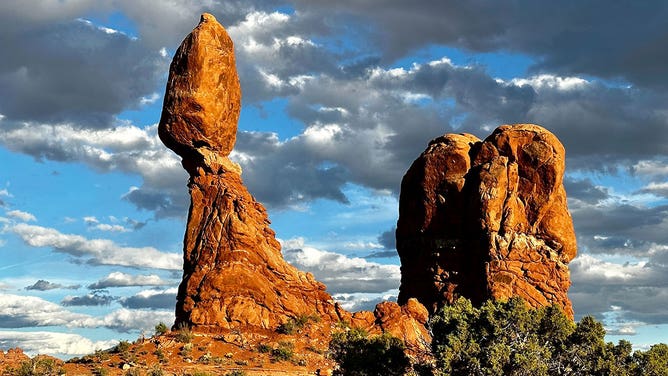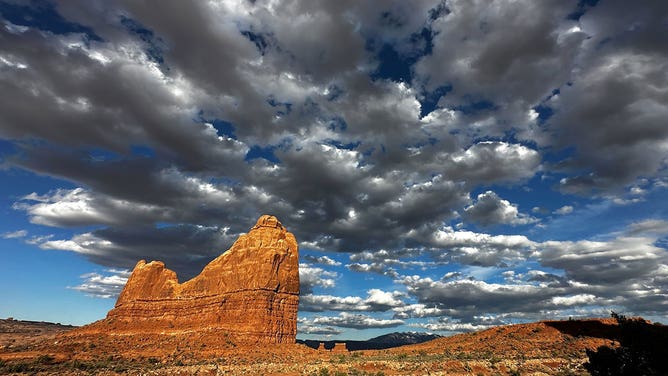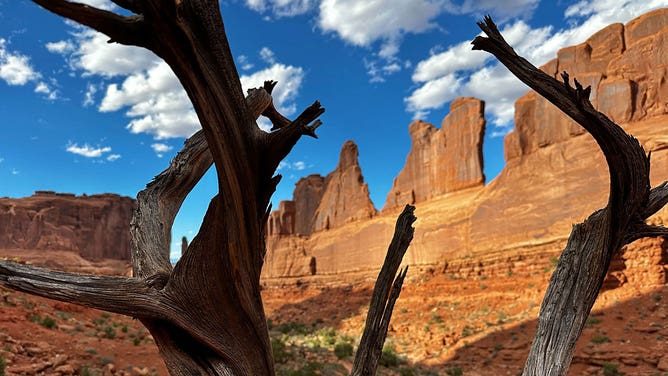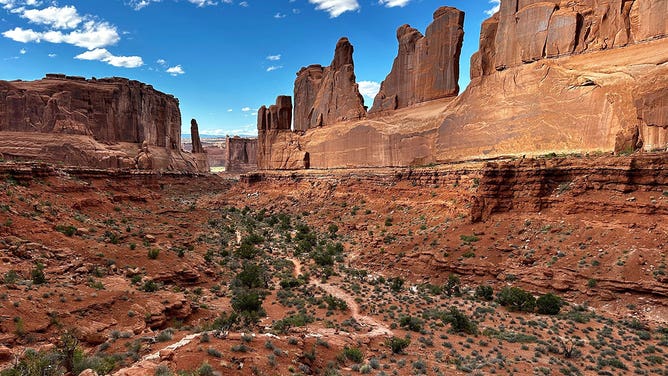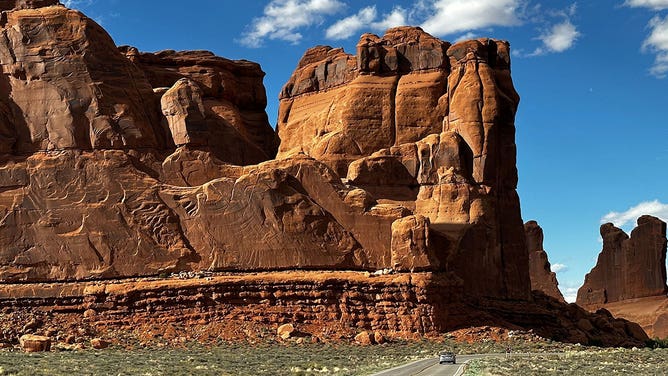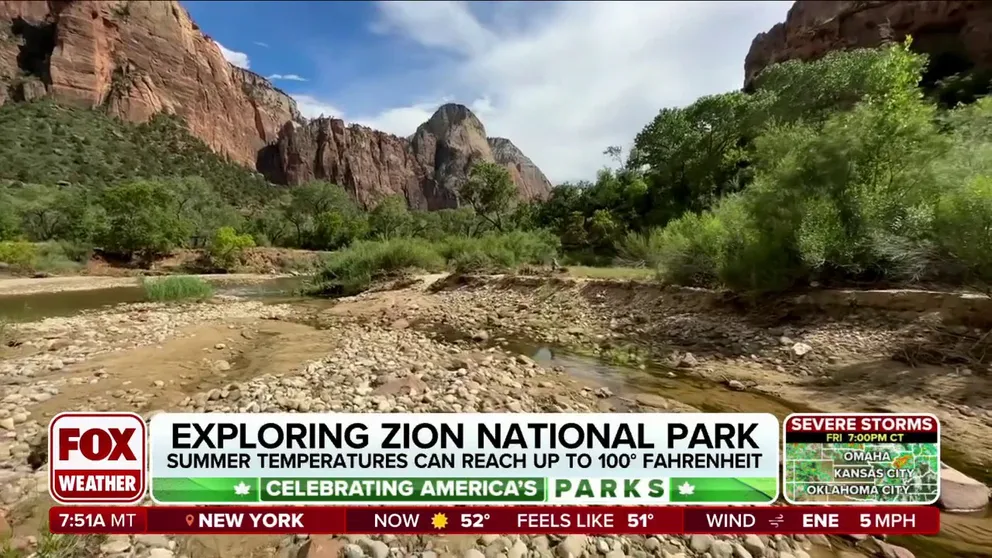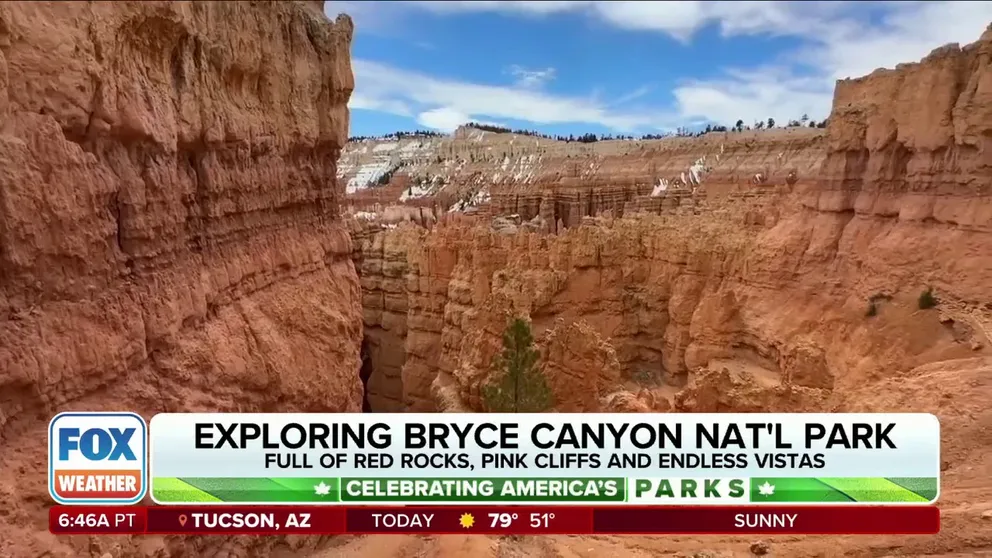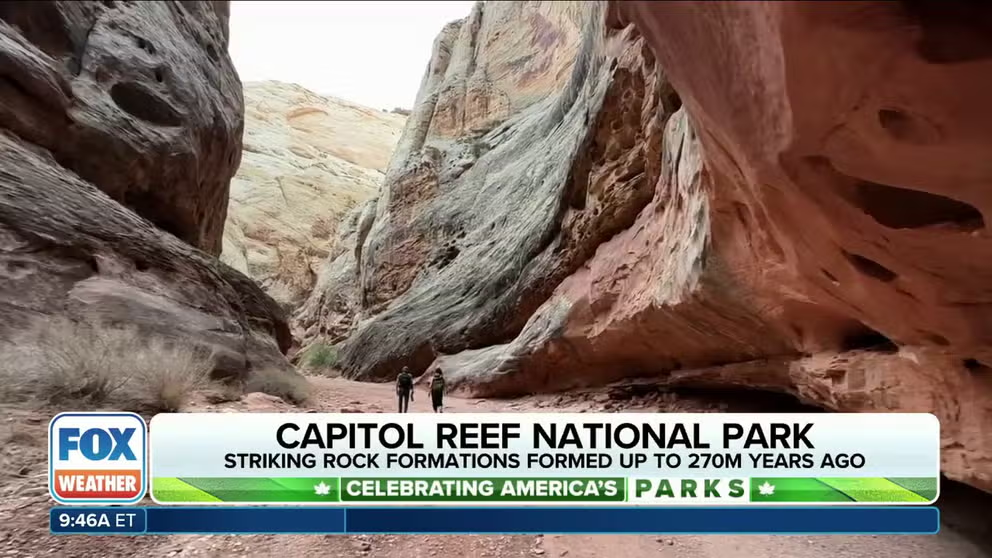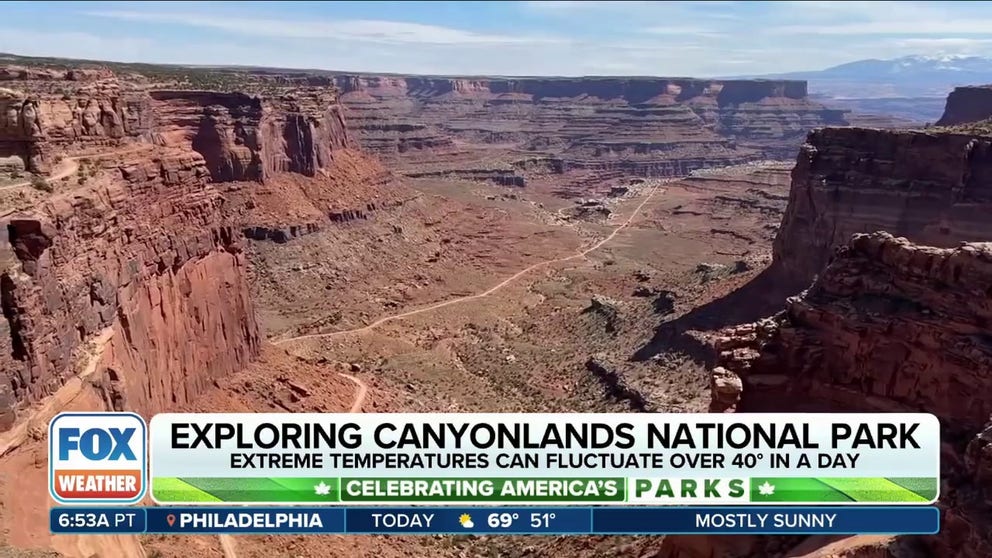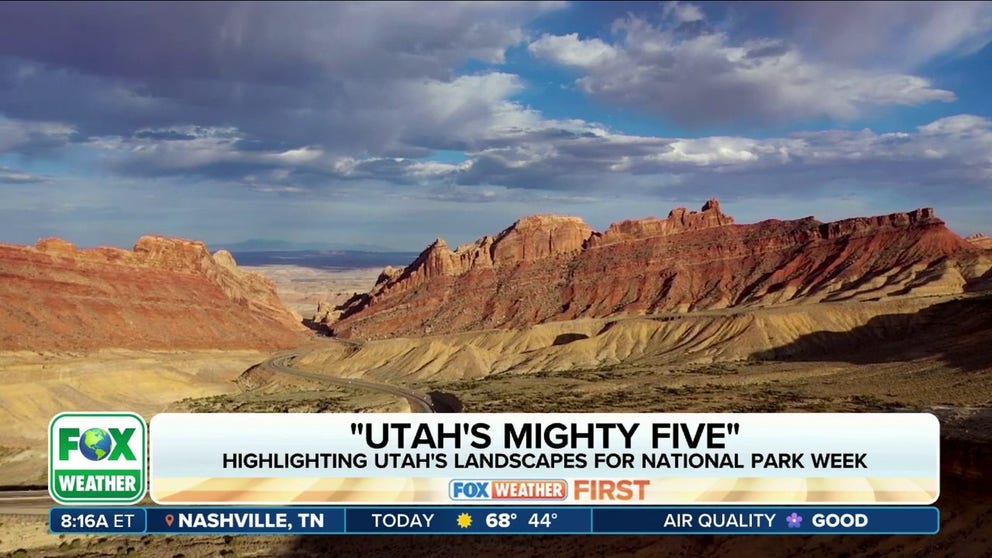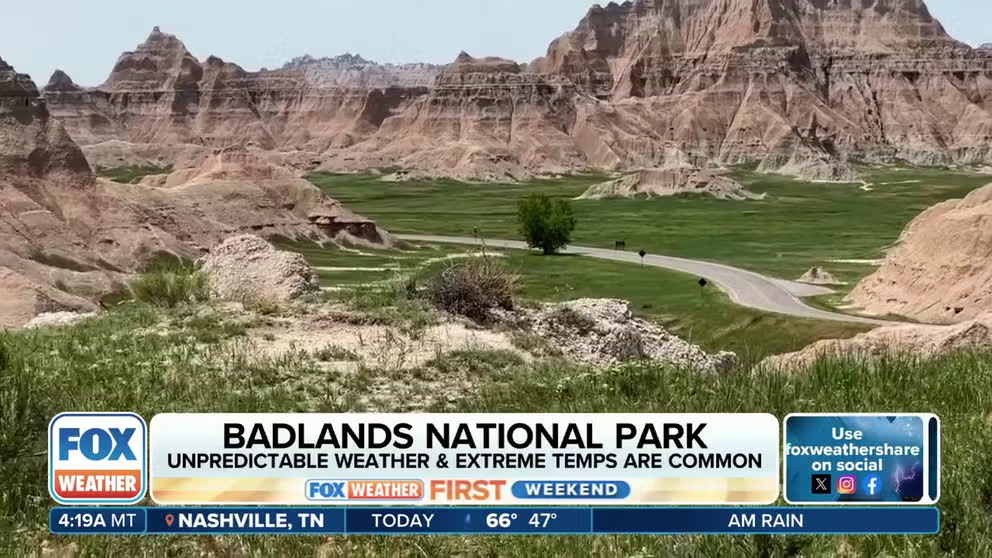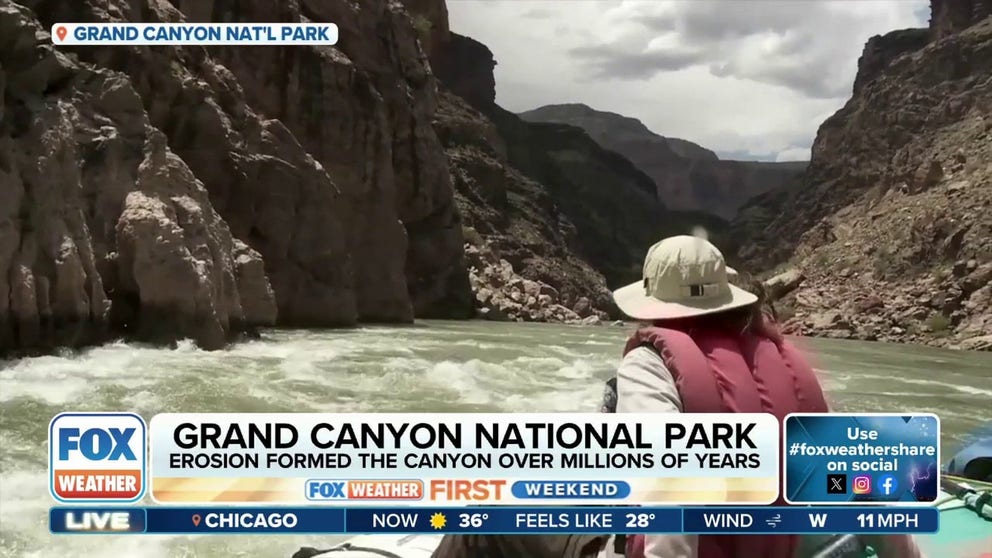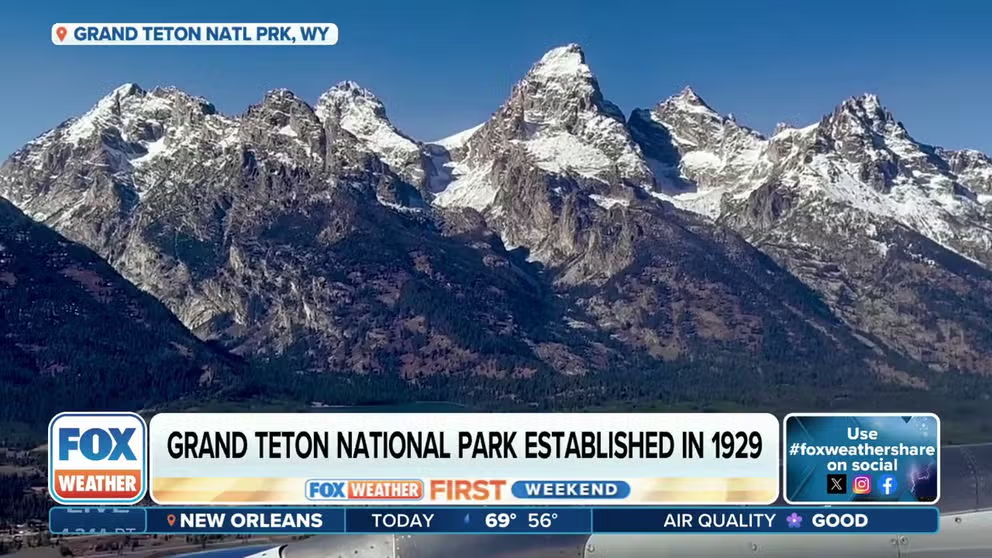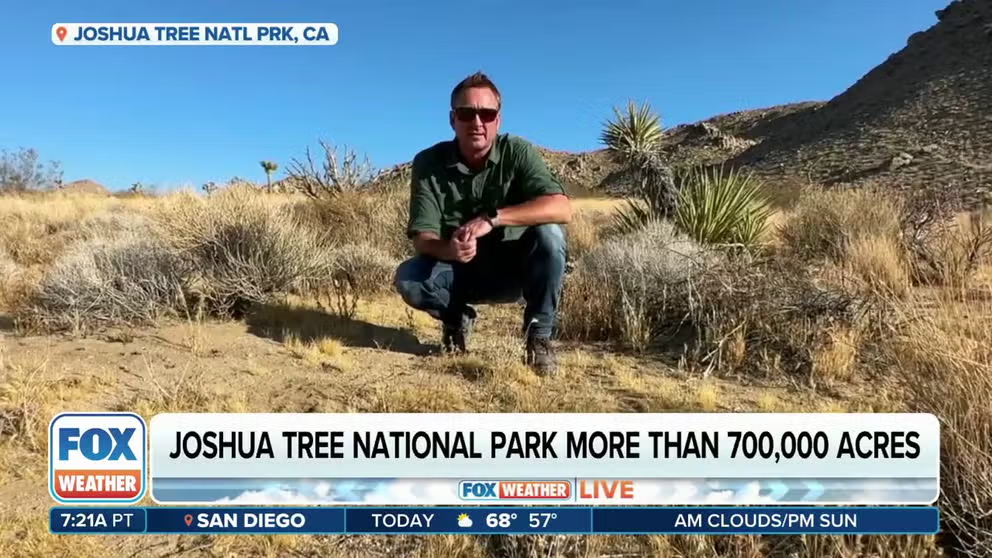FOX Weather celebrates National Parks Week with inside look at most stunning locations in America
FOX Weather is exploring the elements of America’s grand landscapes, and as part of the National Parks Week celebration, Robert Ray will be exploring "Utah’s Mighty Five" national parks throughout the week.
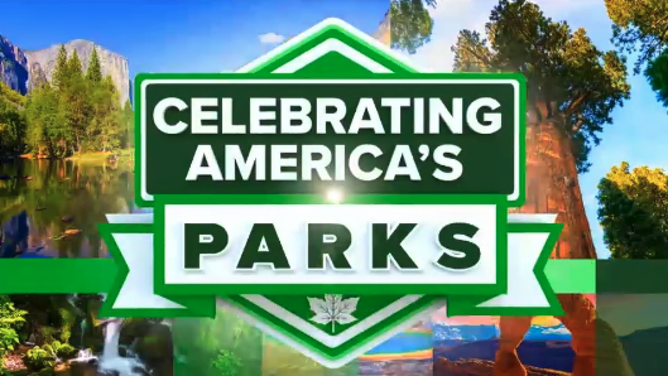
FOX Weather is exploring the elements of America’s grand landscapes, and as part of the National Parks Week celebration, Robert Ray will be exploring "Utah’s Mighty Five" national parks throughout the week.
(FOX Weather)
This week is National Parks Week, and FOX Weather is excited to bring you an inside look at some of the country's most stunning locations.
FOX Weather is exploring the elements of America’s grand landscapes, and as part of the week's celebration, Robert Ray will explore "Utah’s Mighty Five" national parks throughout the week.
NATIONAL PARKS WEEK ACROSS AMERICA KICKS OFF SATURDAY WITH FREE PARK ADMISSION
Join us all week long as we take the adventure to the screen with dynamic tours and explorations. Ray started the week at Arches National Park in Moab, Utah, on Monday. On Tuesday, he was live from Canyonlands National Park just to the south of the Arches.
On Wednesday, the trek continued to Capitol Reef National Park, which offers more breathtaking visuals. On Thursday, he visited Bryce Canyon National Park to highlight its out-of-this-world landscape and burnt orange hues.
To end the week, Ray will be in Zion National Park, which offers stunning vistas and rivers.
FOX WEATHER'S NATIONAL PARKS WEEK COVERAGE
Zion National Park: Home to the tallest sandstone cliffs in the world
Zion National Park is located in southwestern Utah and is known for its stunning red cliffs, narrow slot canyons, and lush greenery. The park is home to iconic landmarks such as Angel's Landing and The Narrows, which are popular hiking destinations.
It's also home to some of the tallest sandstone cliffs in the world, some reaching 3,000 feet in height.
Zion National Park: Home to tallest sandstone cliffs in the world
Utah's Zion National Park boasts over 100 miles of hiking trails and towering rock formations that can reach 3,000 feet in height. FOX Weather's Robert Ray takes us on a tour as we celebrate National Parks Week.
"In Zion, it’s these white cliffs that are so magnificently on display," said Peter Densmore with the U.S. National Park Service. "The Navajo sandstone is thousands of feet thick, so you get these towering rock walls that get exposed by the erosive action of the Virgin River."
You can experience much of the park from your vehicle as you drive through. "But I would suggest pulling over, and getting your pack on, and hitting one the trails to get the full experience," Ray said. There are over 100 miles of hiking trails.
Visitors can also enjoy activities such as rock climbing, canyoneering, and wildlife viewing.
Bryce Canyon National Park: Full of red rocks, pink cliffs and endless vistas
For millions of years, water has carved Utah’s rugged landscape, leaving a stunning natural playground. Bryce Canyon National Park is a perfect example.
It's known for its unique rock formations called hoodoos, expansive hiking trails and breathtaking views of the natural landscape.
Bryce Canyon National Park a stunning national playground
FOX Weather’s Robert Ray visits Utah’s Bryce Canyon National Park which is known for its unique rock formations called hoodoos, expansive hiking trails and breathtaking views of the natural landscape as part of our week-long celebration of National Parks Week.
"Bryce Canyon is actually the smallest of the five parks (in southern Utah), but the views and experience here are as grand as any of the other four," Densmore said. "Bryce Canyon is home to the world’s greatest concentration of rock spires that we call hoodoos – these are the vivid red, yellow, cream and orange rock spires all along the eastern edge of the Paunsaugunt Plateau about 8,000 feet above sea level. From here, you can not only admire the views of the hoodoos but views that extend over 100 miles of southern Utah and northern Arizona."
Capitol Reef National Park: Rock formations 270 million years in the making
Capitol Reef National Park is known for its colorful sandstone cliffs, towering rock formations and also historic orchards.
Celebrating National Park Week at Utah's Capitol Reef National Park
FOX Weather's Robert Ray reports live from Utah's Capitol Reef National Park Wednesday showcasing the towering rock formations and sandstone cliffs that make this national treasure one of Utah's "Mighty Five" parks.
"It feels like a mix of all the southern Utah parks," Densmore said. "You have hoodoos there, you have canyons carved by rivers, you've got arches and natural bridges and domes. All these geologic features that make southern Utah unique can be found in Capitol Reef."
Some of those geological features were shaped over 270 million years of erosion and geology.
"When you stop to actually think about the tremendous depth of time that it took for these rocks to form and then be uplifted and then be eroded and sculpted into the fanciful shapes we see today … it's literally mind-boggling," said Karen Garthwait with the U.S. National Park Service.
Canyonlands National Park: 500 square miles of rugged beauty
Canyonlands National Park is known for its rugged landscapes, deep canyons, towering rock formations and the confluence of the Colorado and Green rivers.
Exploring Utah's Canyonlands National Park for National Parks Week
FOX Weather's Robert Ray takes us on a tour of the picturesque and rugged landscape that awaits explorers in Utah's Canyonlands National Park.
"Canyonlands National Park is the largest national park in the state of Utah, at over 500 square miles," Garthwait said. "It’s hard to put it into one description because it's almost like three separate national parks. The Green River and the Colorado River cut through the park and divide it into different districts that have a totally different character all to their own, and different adventures you can have in each one."
Arches National Park: More than 2,000 natural sandstone arches
Just outside of Moab, Utah, lies Arches National Park. The park's main draw is its rock formations, with layers of textured sandstone as far as the eye can see.
Arches National Park spans more than 76,000 acres of desert landscape and contains over 2,000 natural sandstone arches, including the famous Delicate Arch. The park offers numerous hiking trails, scenic viewpoints and opportunities for photography and rock climbing.
"Without exaggeration, every single time I turn my head and take a look, I want to take a picture or video," Ray said. "It's just that majestic. The sights are unbelievable, and they go on for miles. It's endless."
Explore the picturesque landscape of Arches National Park in Utah
FOX Weather's Robert Ray visits Arches National Park in Moab, Utah, the first stop on a tour of "Utah's Mighty Five" to highlight the state's jaw-dropping landscapes in honor of National Parks Week.
Badlands National Park: Home to world's richest fossils
A must-see on any tour of national parks is a trip to South Dakota, where you can find some of the world's richest fossils.
"It’s an incredible, expansive landscape," Ray said. "It almost feels like you’re not on Earth; you’re on an alien planet of some sorts. But there’s some truth to that as much of this topography is not found anywhere else on the blue planet."
FOX Weather takes you on a scenic tour of Badlands National Park
Saturday marks the start of National Parks Week, and FOX Weather is excited to bring you an inside look at some of the most stunning locations in the country. Our first adventure takes us to South Dakota, where you can find some of the world's richest fossils. FOX Weather's Robert Ray will be your guide on a scenic tour of Badlands National Park.
Grand Canyon National Park: 1.2 billion years of transformation
Carved by the rushing waters of the Colorado River, the Grand Canyon in northern Arizona is considered one of the finest examples of arid land erosion in the world.
The canyon is immense, averaging 4,000 feet deep from east to west for its entire 277 miles and 6,000 feet at its deepest. Its width in one section is 18 miles.
"Over the course of 1.2 billion years, the Grand Canyon has gone through a lot of transformation," says Joelle Baird with Grand Canyon National Park. "(The observation area) is at 7,000 feet elevation. The Colorado River is roughly at 2,500 feet. So we have about 5,000 feet of elevation of rich biodiversity."
Explore the natural wonders of Grand Canyon National Park
Saturday marks the start of National Parks Week, and FOX Weather is excited to bring you an inside look at some of the most stunning locations in the country. FOX Weather's Robert Ray takes you to the Grand Canyon National Park to admire one of America's natural wonders.
Grand Teton National Park: Beautiful mountain views and glacial lakes
The weather continues to change the landscape of the Grand Teton National Park in Wyoming.
Grand Teton National Park offers beautiful glacial lakes, incredible wildlife
FOX Weather Correspondent Robert Ray visits Grand Teton National Park where the beautiful landscape offers mountain views and six glacial lakes.
Visitors from all over the world come for the mountain views and the glacial lakes. There are six glacial lakes at the base of the Grand Teton mountain range, and while there are more than 10 active glaciers, warmer temperatures are melting them, according to the National Park Service.
Joshua Tree National Park: Desert landscape is home to nearly 800 plant species
In the Mojave Desert, Joshua Tree National Park provides an arid landscape for vegetation, including the famous Joshua Trees, some of which have stood for centuries. The Joshua Tree is part of the Agave plant family and can live for about 300 years on average.
The park's stark landscape has been shaped by strong winds and the occasional heavy rain, making it the perfect habitat for plants and animals.
Joshua Tree National Park is home to nearly 800 species of plants
Joshua Tree National Park in California is home to one of America's most unique landscapes with nearly 800 species of plants. FOX Weather correspondent Robert Ray takes you on a tour of the park in the Mojave Desert.
Check back here every day through National Parks Week as we highlight more of America's national natural treasures.
In the meantime, the National Park Service wants everyone to share their experiences, connections and feelings on social media with #NationalParkWeek. Find out about the events near you here.


